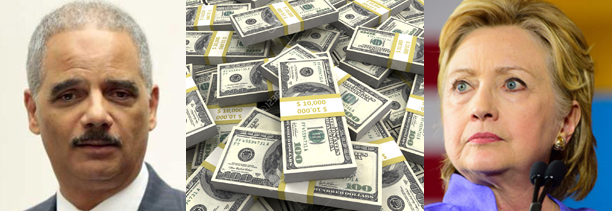From Flagship To Lifeboat: Bankruptcy In American Corporate Law
The Legal Wilderness
Dedicated to Searching and Exploring our Legal Frontiers to Find, Categorize, and Tag the wild, Untamed and Predatory Applications of the Law
 FROM FLAGSHIP TO LIFEBOAT:
FROM FLAGSHIP TO LIFEBOAT:
BANKRUPTCY IN AMERICAN CORPORATE LAW
By
Joseph F. Speelman
“The ship was the pride of the American side
comin’ back from some mill in Wisconsin. As the big
freighters go it was bigger than most,
with a captain and crew well seasoned.”
The Wreck of the Edmund Fitzgerald
Gordon Lightfoot
December 1975.
HISTORICAL BACKGROUND OF BANKRUPTCY LAW
Ancient Times
The idea of debt forgiveness traces back to the beginnings of organized civilization. The Old Testament recounts Moses speaking of a Jubilee, part of a Holy Year that would occur every 50 years and during which it was decreed that all debts would be done away with. 1 Later, the period of 50 years was reduced to 7 years, stating, “At the end of seven years, you must cancel debts.” 2 It is interesting to note that in the 1978 Bankruptcy Act, a debtor could file Chapter 7 Bankruptcy no more often than every seven years. 3
Ancient Greece
In ancient Greece bankruptcy did not exist. If a person owed and he could not pay, he, his wife, children and servants were forced into “debt slavery” until the debt was paid through their physical labor. 4 Perhaps Greece might take a lesson from its ancient past in approaching the notion of not repaying its current debts.
16th Century England
In England, initial laws relating to Bankruptcy were created in 1542 in the reign of Henry VIII and are notable in that a bankrupt individual was established as a criminal and subject to criminal punishment which would include being placed in a debtor’s prison or even executed. 5 Recall that Charles Dickens, in “A Christmas Carol” spoke disparagingly of debtor prisons in England.
US Bankruptcy History
Bankruptcy law in the United States developed primarily as temporary resources related to bad economic conditions and reflected a more practical approach to insolvency and also, for the first time, included making debt forgiveness available to mercantile enterprises and ultimately corporations as well as individuals. These laws were temporary and Congress passed three separate, official bankruptcy laws to deal with economic crises including the Civil War and, in each instance, they were later repealed. 6
The first permanent Bankruptcy law in the U.S. was first passed in 1898. 7 Different versions of the Bankruptcy law were enacted to either substantially alter or replace the initial law over time until the current Bankruptcy Code was enacted in 1978, The Bankruptcy Reform Act of 1978. 8
Modern US Bankruptcy
Modern US bankruptcy law and practice provided a strong focus on rehabilitations (reorganization) of debtors and moved away from the notion of punishing debtors. The 1898 statute for the first time provided for commercial entity debtors to be protected from creditors by creating an equity receivership concept. 9 The Great Depression produced two further versions of a national Bankruptcy Code that produced an expression, from the U.S. Supreme Court, of national bankruptcy philosophy to allow debtors a “fresh start” from financial burdens. “A new opportunity in life and a clear field …unhampered by discouragement…” . 10
A New and More Treacherous Chapter 11
“The wind in the wires made a tattletale sound
and a wave broke over the railing…
and every man knew, as the captain did too,
T’was the Witch of November come stealin’’
The Wreck of the Edmund Fitzgerald
The 1978 Act continues as the overall structure of U.S. Bankruptcy law today including an enhanced reorganization chapter called Chapter 11. 11 This section has become a focus of intense activity during the last part of the 20th Century and the first 18 years of the new Millennium.
Chapter 11 filings have steadily increased since 1978. Various explanations have been posited for that fact. During the last two decades of the 20th Century, a record number of business bankruptcies were filed including Eastern Airlines, Texaco, Continental Airlines, Allied Stores, Federated Department Stores, Greyhound, R.H. Macy and Pan Am. 12 The U.S. Bankruptcy Code was amended in 1994 to deal with more bankruptcies and to address perceived notions of abuse in Chapter 7 filings and also allowed expedited proceedings to aid in creditors collecting debts against debtors in business bankruptcies. 13
From 1979 through 2005, the bankruptcy process began to feel stresses that included difficulties in business reorganizations and also Chapter 7 cases. Significant pressure began to build on the process from credit card creditors to tighten up Chapter 7 access. Filings increased, strategic abuse of Chapter 11 was alleged. Complaints about Chapter 11 allowing essentially debtor self management of the process were expressed by academics. 14
In 2005, Congress passed and President Bush signed into law, The Bankruptcy Abuse Prevention and Consumer Protection Act (BAPCA) of 2005. 15 This law came about after 6 years of complaints and debate within Congress and legal circles about various abuses occurring in bankruptcy cases. It limited discretion of bankruptcy courts to limit a perception of excess activism and excessive protection of debtors at the expense of many classes of creditors. It seems that bankruptcy judges were taking significant liberties in the interpretation of congressional intent in administration of the bankruptcy process. 16 Additionally, concerns were raised about attorneys gaming the system, creating bankruptcy “mills” for fee generation, charging ever increasing amounts of money for fees and using their position of special knowledge and control of access to the judicial bankruptcy process to extract exorbitant fees. The BAPCA contained a series of restrictions on what judges could do and what attorneys could advise clients regarding bankruptcy. The “means test” was created as a restriction on judicial discretion. The Act also contained a series of provisions diverting consumers away from attorneys and into structured debt counseling. 17
It is interesting that the Chapter 11 processes for larger businesses were not significantly affected by BAPCA even though the number and complexity of Chapter 11 cases was increasing and even a casual observer of the process could see that attorneys dominated every aspect of the process, judges were allowing modifications, mutations of the process, utilizing their discretion to deal with the increasing workload and complexity they faced. The above were all things that Congress sought to restrain in the BAPCA. 18 Some issues began to develop regarding how Chapter 11 was being administered in Delaware as being too “debtor friendly” and a rejection of the “new deal” constraints on the process in the 1933 and 1934 Amendments to the Bankruptcy Code. However, other than some additional involvement of the U.S. Trustee and increased transparency over executive accountability, Chapter 11 for large companies has increasingly become almost self directed by the debtor, secured creditors, overworked judges, and, of course, extraordinarily well paid private law firms, including firms paid by the debtor to represent unsecured creditors. 19
Chapter 11
Alistair Cooke, in his History of America, cautioned that historians should always stop short of approaching the present time for fear of not giving proper context. However, he was writing in the 1960s. Before personal computers became wide spread and before “history”, meaning events, began to accelerate, electronically, financially, and historically. To discuss Chapter 11 at all would violate Cooke’s admonition. However, Chapter 11 is where things seem to be careening out of control. A historical perspective would be incomplete without focusing on it.
Chapter 11 of the U.S. Bankruptcy Code came “Front and Center” to use a military phrase, in 2008 and to the present. Of the 10 largest bankruptcies in U.S. History, 7 occurred from 2008 through 2010. 20 All of these bankruptcies were filed under Chapter 11 of the U.S. Bankruptcy Code. 21 Since 2008, over a 50% increase has occurred in business bankruptcy filings in the US. 22 The top 20 bankruptcies of all time have occurred from 1987 on, and 80% of those occurring since 2001. 23 The top 20 all time U.S. bankruptcies totaled $1.8 trillion in size and over three quarters ($1.4 trillion) of these bankruptcies by value, have occurred in 2008 or later. 24
Between 2000 and 2007, Chapter 11 filings seemed to languish and the number of filings were trending down. Many critics and academics wondered if Chapter 11 was necessary because of the slow filings and the low number of successful reorganizations. 25 Noted bankruptcy expert and counsel, Harvey Miller, of Weil, Gotshal & Manges stated, “Has the structure of our economy changed so fundamentally that the concept of bankruptcy reorganization as we know it has ceased to be relevant?” 26
During the 1990s through the present, fundamental changes to the dynamics of restructuring and reorganizations occurred beginning with the impact of technology. Everything moves faster and faster. More information is in the hands of more people who have become more sophisticated in dealing with economic stresses and cycles. 27 The principles of the 1978 Act relating to duties and policies to protect the investing public (emphasis added), protect jobs and help save troubled businesses as well as the public interest beyond the interests of the disputing parties 28 seemed to be eclipsed by the abusive efficiencies of leveraged loans, inflated liquidity, hedge funds, private equity funds, second liens, third liens, below investment grade loans, distressed property investment, high yield debt 29 and the dark lords of modern financial theory who conceived such concepts.
Testifying in March 2009 before Congress, Harvey Miller stated that Chapter 11 in 1978, designed to rehabilitate distressed debtors, “has been whittled away by special interest groups to the point that today the prime objective is the maximization of creditor recovery”. 30 Today, Chapter 11 has devolved into an intellectual and legal “free fire” zone that has become dominated by a few, key elements of modern Chapter 11 bankruptcy; distressed business finance, essentially secured creditors, the debtor or a creditor controlled restructuring officer, a generally overworked and underpaid judge, a plaintiff-attorney style unsecured creditors “trustee”; all glued together by very highly paid counsel and their law firms who have total control of the process, the outcome, and picking the winners and the losers. It has become a means to validate or sterilize asset sales, fund transfers, and asset transfers. 31
Each of the key parties has two things in common. First, they have access to huge numbers of highly paid attorneys to do their bidding, and, second, those attorneys are paid for from the debtor’s estate. Creditors use threats of legal action against the other key parties to coerce secured or senior creditors to reach accommodations with junior creditors, all coming from “other people’s money”. 32 These threats include “breach of fiduciary duty”, “equitable subordination” and, of course, “fraudulent transfers”. 33 Secured lenders, the large, mega banks of Wall Street, London, Europe, Dubai, and usually the pre-Chapter 11 lenders, use their economic leverage (other people’s money and government bailout funds), to exert compelling control over the debtor, the Chapter 11 case including providing DIP (Debtor in Possession) financing, which is critical to funding the above process. This control includes having unsecured creditor claims against them dismissed at an early stage of the process and always at a substantial discount to actual value. 34 The DIP finance agreements, usually “hammered out” after mid-night in dimly lit conference rooms in the bowels of a bankruptcy court facility with dozens of attorneys present, few, if any clients, and no one representing targets of unsecured creditor plaintiff counsel’s questionable claims of fraudulent transfers, and they typically limit the bankruptcy court’s role and discretion in the entire case. 35
Pre-Packaged Chapter 11
With the invention, by the key Chapter 11 players set out above, of the pre-packaged Chapter 11, or “pre-pac”, came a further erosion of the Chapter 11 process. The erosion being the reputation as well as what was left of the intellectual honesty of that process. Its innovative, if not inappropriate use of Bankruptcy Law and Chapter 11 specifically to facilitate the conversion of litigation risks from questionable but aggregated asbestos claims to bankruptcy assets by moving money from otherwise successful businesses into trusts managed by a bankruptcy trust for the benefit of asbestos plaintiffs in exchange for a release of the claims, may well be a questionable and perhaps improper tactical use of the discharge provisions of a Chapter 11 Plan of Reorganization. 36
While there may be a very few instances when a pre-packaged Chapter 11 might serve to refinance a distressed business at reduced costs, 37 that is somewhat limited and has been used (misused) in recent years to focus on tactical situations, such as asbestos litigation, and has led to creation of murky, troublesome appearing asbestos bankruptcy trusts. 38 Other, non-asbestos related, notable uses of the “pre-pac” Chapter 11 device are the Chrysler and General Motors bankruptcies, which used the quick process to alter secured party priorities in some fundamental ways in the midst of the most recent, well known world financial crisis.
The Dark Side of Chapter 11
“…that good ship and crew was a bone to be chewed
when the gales of November came early…”
The Wreck of the Edmund Fitzgerald
As has been pointed out in a rather stark fashion above, Chapter 11 of the US Bankruptcy Code has some significant problems. Chief among them, as Mr. Miller so eloquently points out, being how the system is subject to manipulation, mutation, and abuse at the hands of the key, dominant players in the bankruptcy arena. Who protects, effectively, the small investors, the general public’s interests, employees of entities, and the stated wishes of Congress while all the self dealing is taking place? Congress designated protection for such groups. The U.S. Bankruptcy Code (“Code”) has a number of features that are designed to protect certain groups or parties who, in the view of Congress, should not be subject to the rather draconian provisions of the Code allowing legalized confiscation of funds from parties who received payments, salaries, employment related income as employees, officers, or investors in or dealing with the bankrupt entity. 39
As an example of the above, Section 546(e) was intended to protect the securities markets from the aggressive activities of under secured and unsecured creditors in a bankruptcy proceeding in the use of the power to seek return of money to the debtor’s estate resulting from preference claims and constructive fraudulent transfer claims. 40
Litigation trusts, a device to speed up the debtor emerging from bankruptcy, have raised questions about how the trustees have used the devise to bring questionable claims against shareholder and former officers and directors. 41 Indeed, one individual shareholder living in Colorado found himself sued by a Chicago Tribune subordinated debt holder, a so-called secured creditor. His wrongful act? He bought shares of the Chicago Tribune. He wrote a letter to the bankruptcy judge, saying, in part, “There doesn’t seem to be any adult supervision looking out for the average investor … (just) unemotional, ruthlessly efficient litigious investors attempting to extract whatever they can from whomever they can sue.” 42
Perhaps the above quote is a good place to draw an end to the recent historical overview of Bankruptcy Law and process, especially Chapter 11. A more determined and focused analysis of these issues, particularly how Chapter 11 is being used and controlled, and whether there is adequate oversight of the bankruptcy process will take place later in this article. Perhaps government should assert itself into the process and insist upon more “adult supervision.” Those are points to be addressed.
Chapter 11;
An Imperfect Vessel in a Perfect Storm:
A Reprise
“Does anyone know where the love of God goes
when the waves turn the minutes to hours….”
The Wreck of the Edmund Fitzgerald
The first part of this article ended with a thought: “The frank and harsh light of transparency on such abuses of shareholders, employees, former officers and directors, “devices:, “gimmicks”, tricks, or shortcuts within the Chapter 11 Bankruptcy process will show them for what they are and can help right the wrongs, un-trick the tricks, provide proper and sustained supervision of the process, and preclude further uncontrolled, unintended mutations of US Bankruptcy Law and provide substantive and procedural fairness and justice to all those affected by the inevitable “ship wreck” of bankruptcy. Or so we thought. Indeed, as setout below, it is rather discouraging.
It was encouraging to learn that the Bankruptcy Law Institute (BLI) had created a “high level” commission to look at Chapter 11. 43 It was full of promises to look at the situation straight on and, after holding a series of open hearings by the commission around the country, to report findings. The final report was issued on December 9, 2014. Five years after the deluge of Chapter 11 filings resulting from “The Great Recession” financial crisis. 44 Quite honestly, it appears the commission really “missed the points” referenced above. The same people, making the same statements over and over again, wringing their hands and expressing an occasional “oh my” had taken over the commission’s activities and then conclusions. To stay with the maritime theme of this article, the BLI and its commission were engaged in an exercise of rearranging the deck chairs on the Titanic. 45
To explain. Apparently a reporter attended several of the BLI commission hearings. He questioned a number of participants and attendees, including some Bankruptcy Judges. Additionally, at least some of the hearings were taped and have appeared on a number of web sites in the internet. What these glimpses at the commission process showed is…. Business as usual. “Major Strausser has been shot….round up the usual suspects” seems to have been the rule of the day for the commission. The most painful example was a panel presentation by several bankruptcy judges regarding “Hot Topics In Bankruptcy”. One panelist, Judge Robert Gerber, of the SDNY and notable as having presided over the General Motors Chapter 11 proceeding, completed in 44 days, was asked about the LyondellBasell bankruptcy, in particular, the activities of the counsel for the Litigation Trust. Judge Gerber did not comment. Instead, another bankruptcy judge read a statement, while Judge Gerber listened intently, that discussed some of what were called “novel theories” of liability, contrary to Section 546(e) of the Bankruptcy Code, in the LyondellBasell case, created by what were deemed “creative” minds of the counsel for the litigation trust. The gist of these comments, which everyone believed Judge Gerber wrote, was that Judge Gerber was faced with these “novel theories” by “clever” attorneys and he would have to “contemplate” them and then try to deal with them. The very distinct impression was purposefully left by the statement that such theories had only recently been filed and the Judge had not had the time to examine them closely.
A quick review of the appropriate part of the LyondellBasell docket, discovered that a series of such “novel theories” had been asserted against former shareholders, employees, officers, and directors of Lyondell by the Litigation Trust counsel and such claims had been pending for almost three years! In fact, counsel for various parties had filed motions to dismiss as to each “novel” claim and such motions had been languishing on the desk of Judge Robert Gerber for years! 46 For over three years a great number of current and former employees labored under the burden of allegations of fraud and other abusive, never proven assertions, that if made outside the context of a pleading, would have been defamatory. And while Judge Gerber apparently did not read such assertions, they were open to the national media and “thrown around” during various bankruptcy process meetings and discussions. Try, if you can, to compare the above to the “44 day miracle of modern Bankruptcy Law” called the complete GM Chapter 11 Reorganization proceeding. Also presided over by Judge Robert Gerber. Justice delayed, is justice denied, plain and simple.
With the winding down and ultimate “end” of the “Great Recession”, business bankruptcy receded from the front page and, while the litigation trust “specialist plaintiff counsel” still exist, the opportunity for them to inflict their particular brand of abuse, intimidation, and extortion has become much limited…..for now. The American Bankruptcy Institute Commission to Study the Reform of Chapter 11 issued a report in 2014. One interesting comment about the abuse of section 546(e) of the Bankruptcy Code was observed, but not in the report itself.
“The law consistently supports the proposition that the “plain language” of 546(e) protects shareholders receiving payments in leveraged buyouts, even of private companies, so long as a “financial institution” in used as an intermediary in connection with remitting the funds to be received by the shareholders in the transaction.” 47
The foregoing is a statement and analysis by the law firm of Davis, Polk & Wardell stating what was, and still is, the settled law on the issue set out above regarding Judge Robert Gerber, the LyondellBasell claims by the Litigation Trust counsel and the large group of American citizens caught in a four year web of improper use of Chapter 11 by plaintiff counsel. The Commission did not comment upon the issue in its text.
The Role of Single Client Counsel in Bankruptcy
“ The church bell chimed and it rang 29 times
for each man on the Edmund Fitzgerald”
The Wreck of The Edmund Fitzgerald
Counsel working inside of a business or organization have a single client….only one to provide legal services to on behalf of such client. That can be a relief from conflict concerns however, when the subject becomes “An Existential Threat “ to that single client, it is a very serious matter for such counsel and that counsel’s client. Bankruptcy is one of the ultimate threats to a business’s existence. The bankruptcy process is set up, as discussed above, to deal with crisis situations that threaten the end of or destruction of an organization. To a single client counsel, perhaps the first reaction is something like panic. A crisis, usually financial in nature, within an organization often comes as a surprise to many of the employees of the organization. It is an unwelcome surprise and it can immediately destabilize the essential processes within an organization and its employees. Here are a some key points to always keep in mind:
- Do not panic and do not begin worrying about your job. As counsel, you are a leader in the organization. It is essential that you keep your decorum and immediately begin to respond to the situation.
- As counsel, particularly a senior counsel, you should be involved in the risk management function of the organization. That function should be fully aware of a business crisis of any sort, financial, operational, reputational, physical or all of the above. Consult that group and insist upon a leadership role.
- Understand, well in advance, the process of Bankruptcy, essentially Chapter 11 Business Reorganization.
- A crisis management group should have already been organized to deal with a crisis. Initiate that group and ensure that legal and accounting involvement is part of the leadership.
- A communication process must be started with key outside counsel and accounting groups.
- Identifying the risk, and the size of the risk, financially as well as business process wise.
- A constant communication process with key leadership in the company including the CEO, Chief Financial Officer, Board of Director Leadership, public relations functions, personnel functions, security functions.
- Ensure that any strategic or tactical communication with other businesses or government should have legal counsel aware of and involved.
Much of the above processes can be pre-established. For example, depending upon the type of crisis, the key issue is financial impact. That means that banking and investing relationships, in house and externally, should be in communication with the leadership. Chapter 11 of Bankruptcy is the key to a business crisis. The intent and design of Chapter 11 is to provide a controlled, damage limitation process for reorganization of the business entity.
One matter that should be determined in advance of any business crisis should be the pre-selection of a jurisdiction for seeking a Chapter 11 reorganization. That is a complex issue and the result can be very good for the organization or not so good. If the crisis is financial, and it is widespread (not simply your company), it is most likely that the Chapter 11 process will be focused in New York as most major banks in the US are either located there, have significant presence there, and the courts and bankruptcy counsel expertise is there as well. Depending upon the size of the organization, your attorney relationship may already exist. Well prior to any crisis, make yourself aware of the key personnel within the outside firm and engage them in creating a communication process.
Study the so called “Great Recession” situation. It is a pattern that you should be aware of and anticipate. The process by which businesses began to have financial crises was quite fast and, in hindsight, predicable. As well, understand that financial crises have occurred regularly within the present financial and governmental structure. You should never be much surprised when one occurs. Honestly, I would suggest you watch the movie “The Big Short” as it describes how a financial system can collapse and how quickly that can occur. Remember, it is a true story.
Now, back to #1 – Do not panic. Every crisis has a beginning, middle, and an end. The sooner you can accept operating in a confusing, destabilizing environment, the better you will function and the sooner you can accept the situation and proceed along.
Some things to keep an awareness of:
- Financial conditions nationally and internationally.
- International situations/crises/developments.
- Your company’s financial situation.
- Your company’s business sector’s situation.
- Events specific to your company.
- National and international natural disaster potential
Being a single client counsel is not in any sense easy. I have often described it as “not a job, but an adventure”. That is true. Every day something comes along that you did not anticipate. If you can get to the point that you do anticipate those matters, you are on the right path.
There will be a few more articles on Existential Threats to businesses. This is the first as it deals with the most common threat a company will face sometime during its existence. How you, and your client deal with Bankruptcy risks will make your client and you better prepared and more capable of continuing to Exist. Some other areas to think about:
- Whistleblower incidents – Enron
- # Me Too incidents – leadership crisis
- Cyber attacks on your electronic functions
- Board of Director mis-functions
- Internet attacks on the company’s reputation or business process
- Criminal investigations
- Significant strategic litigation threats
- Rapidly developing technology undermining the company’s business functions
- Destabilizing international situations
Be Careful Out There.
Footnote Citations
- Leviticus 25: 10-13.
- Deuteronomy 15:1-2 ; A Brief History of Bankruptcy, http://www.bankruptcydata.com/Ch11History.htm.
- Act of Nov. 1978, Pub. L. No. 95-598, 92 Stat. 2549.
- A Brief History of Bankrputcy, supra note 2.
- Supra at note 2.
- Act of Apr. 4, 1800, Ch. 19, 2 Stat. 19; Act of Aug.29, 1842, Ch 9, 5 Stat, 440; Act of Mar. 2, 1867, Stat. 517; 18 Stat. 182. Is Chapter 11 Bankrupt? – Boston College Law Review, Vol 47, Issue 1, Harvey R. Miller and Shai Y. Waigman (2005) pp. 132-135.
- Bankruptcy Act, Ch. 541, 30 Stat. 544 (1898). Is Chapter 11 Bankrupt? – Supra at note 6.
- Pub. L. No. 95-598, supra note 3.
- A Brief History of Bankruptcy , supra note 2.
- Local Loan v. Hunt, 292 U.S. 234 (1934).
- A Brief History of Bankruptcy, Supra note 2; see also Pub. L. 95-598, supra note 3.
- A Brief History of Bankruptcy, http.//www/bankruptcydata.com/Research.htm.
- A Brief History of Bankruptcy, supra note 12.
- Jason J. Kilborn, A Brief History of U.S. Bankruptcy Law & Policy for Consumers and Businesses, in GOVERNING AMERICA;MAJOR POLICIES AND DECISIONS OF FEDERAL, STATE, AND LOCAL GOVERNMENT 7-9 (Paul J. Quirk, William Cunion, edtrs. 2009).
- Act of Apr. 20, 2005. Pub. L. No. 109-8, 119 Stat. 23.
- Jason J. Kilborn, supra note 14.
- Id. At 11.
- A Brief History of Bankruptcy, supra note 2.
- Jason J. Kilborn, supra note 14 at 8-11; A Brief History of Bankruptcy, supra note 2; Is Chapter 11 Bankrupt?, supra, note 7, p. 131.
- Largest Corporate Bankruptcies, http://www/bankrutcydata,com/Research/Largest_Overall_All_Time. Pdf.
- Ibid.
- Business and Non-Business Filings, http://www.bankruptcyaction.com/USbankstats.htm
- Bankruptcydata.com/Research supra note 20.
- Ibid.
- 2004 Bankruptcy Yearbook & Anuac 5 Christopher M. McHugh Thomas A. Sawyer, editors, 2004.
- Is Chapter 11 Bankrupt? – supra note 6.
- Chapter 11 in Transition – From Boom to Bust and Into the Future, Harvey R. Miller, 81 American Bankruptcy Law Journal, 375 (2007).
- Elizabeth Warren, Bankruptcy Policy, 54 U. Chicago L. Rev 775, 787 (1987).
- Chapter 11 In Transition from Boom to Bust and Into the Future, supra note 27, pp. 376-383.
- Testimony of Harvey R. Miller, Subcommittee on Commercial and Administrative Law of the House Judiciary Committee, 111th Congress, 1st session, March 11, 2009.
- Chapter 11 in Transition from Boom to Bust and Into the Future, supra note 27, pp. 384-386.
- Ibid, pp 388-389.
- Ibid, p 389.
- Ibid, pp 390-395.
- Is Chapter 11 Bankrupt? Supra note 26, p. 170.
- Asbestos Bankruptcy Trust and Tort Compensation, Lloyd Dixon, Geoffrey McGovern, Rand Institute for Civil Justice – ISBN 978-0-8330-5834-8: copyright 2011, Rand Corporation p.3.
- Increase in Prepackaged Bankruptcies to Continue, Baumgartner, Herbino, Shakia, Turn Around Management Association – http://www.turnaround.org/Publications/Articles.aspx?objectID=13343, Oct. 2010.
- Bipartisan bill Would Bring change to Asbestos Lawsuits” John O’Brien, Legal Newsline.com, 18 April 2012 – http.//legalnewsline.com/news/contentview.asp?6 = 235874.
- M. Shennill, Limitations of Market Pacific points’ Protection Against Fraudulent Conveyance Actions, 28 AM. Bankr. Inst. J. 28, at 28 (May 2009); HU.S.C.A. Sections 362(b)(6)(7), (17), (27); 546(e), (f), (g) and (j); 555 to 556, 359 to 561; G. Utlik, S. Caroll Safe Harbor Provided for “Settlement Payments by Section 546(e).
- H R Rep 97-420 at 2 (1982) as repeated in 1982 U.S,C. C.A.N. 583, 583.
- “Tribune Co. Bankruptcy Case haunting Former Shareholders” Michael O’Neal and Ameet Sachter, Chicago Tribune, Nov. 27, 2011.
- Supra at note 41.
- Bankruptcy Law Institute, https://www.badcredit.org/news/abi-commision-chapter11-reform-needed-to-save-businesses-and-jobs/.
- Akin Gump Bankruptcy Alert, www.akingump.com/news-insights/american-bankruptcy-institute-abi-reform-commission-releases.htm1 .
- Bankruptcy Law Review, https://web.archive,org/web/26160321010255/http:llwww.bankruptcy / lawreview.com.
- Supra at note 45.
- American Bankruptcy Institute Commission to Study the Reform of Chapter 11: A review of Significant Recommendations for Larger Chapter 11 Cases, December 10, 2014, Davis, Polk & Wardell, LLP, www.davispolk.com/files/2014-12-10-ABI_Commision_to_study_the_reform_of_Chapter_11,pdf Page 16.








